Cute lunar robots test their skills on Italy's Etna volcano
"Operating in heterogeneous teams, the robots complement and support each other with their different capabilities."
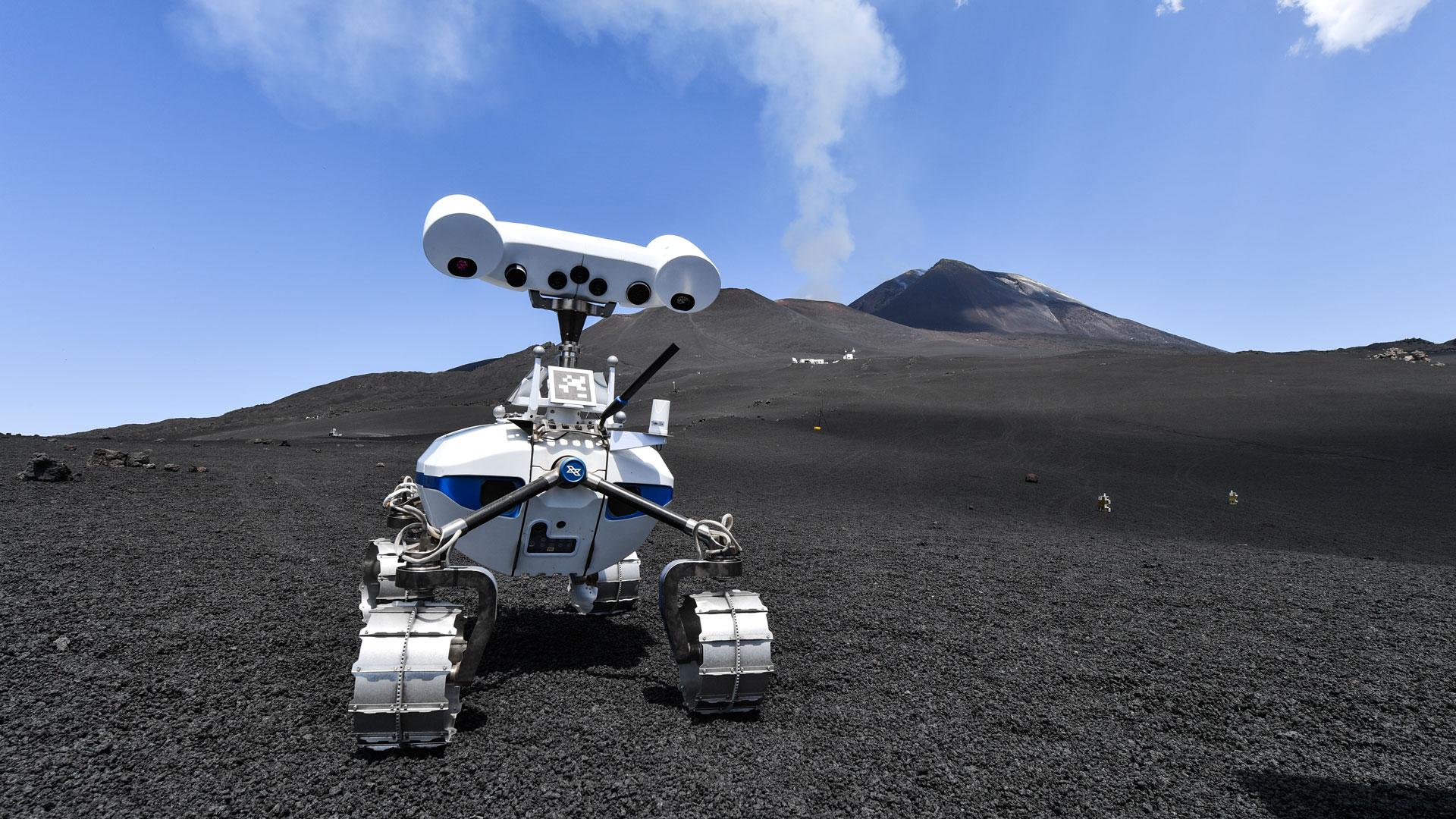
With its adorable stereo-camera eyes, the Lightweight Rover Unit 1 (LRU1) robot, posing on the black gravel of Italy's Mount Etna, resembles PIXAR's famous animated character WALL-E. LRU1 is one of a team of eye-catching robots designed by Germany's engineers that have recently completed a test run on the moon-like slopes of Europe's most active volcano.
The robots, developed by the German Aerospace Center (DLR), spent the last week of June demonstrating their ability to move around and navigate the challenging landscape with minimal human guidance.
LRU1, the robotic team's scientist, analyzed the moon-like soil with its cameras, assisted by its "brother", the Lightweight Rover Unit 2 (LRU2). LRU2, equipped with a robotic arm and hand, can grasp baseball-sized rocks and provide tactile feedback, virtually allowing the scientists to remotely "feel" the lunar stones. The rover can also determine the chemical composition of the collected samples using its laser spectroscope, an instrument that shines a laser beam onto a surface and detects how the surface scatters the light back. A drone called ARDEA guided LRU1 and LRU2 during their endeavor, flying ahead of the two and mapping the surrounding terrain.
Related: China releases huge batch of amazing Chang'e-4 images from moon's far side
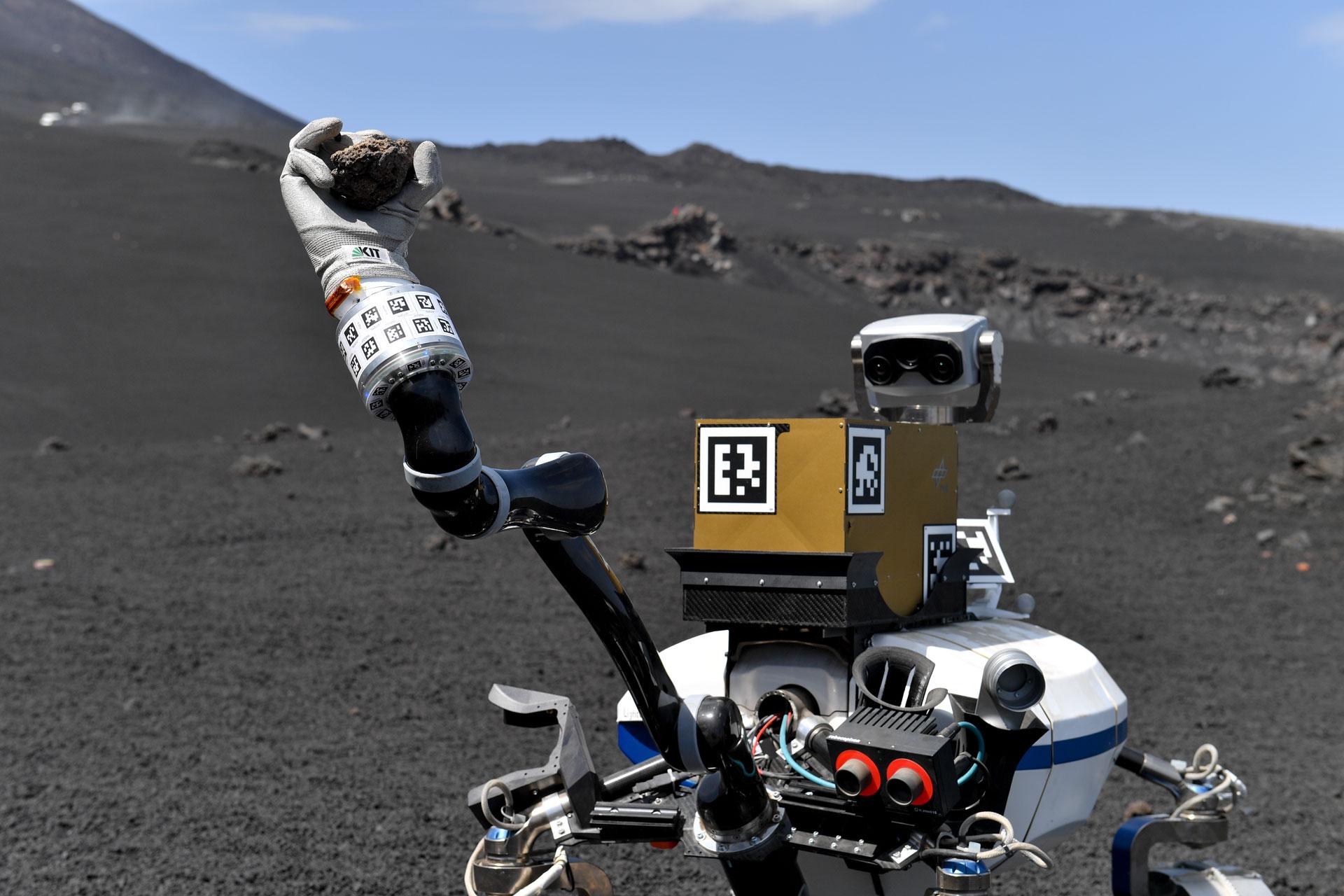
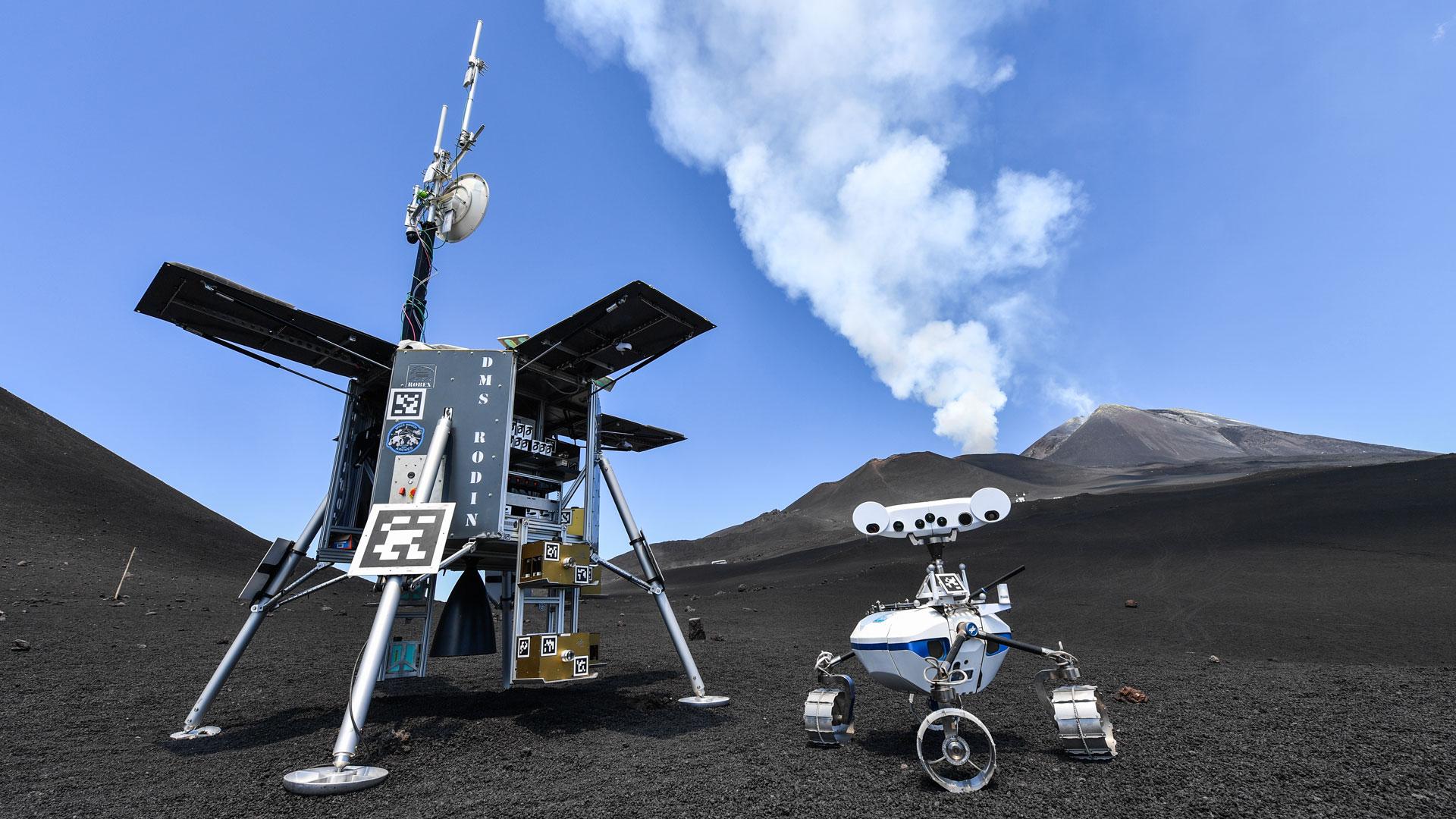
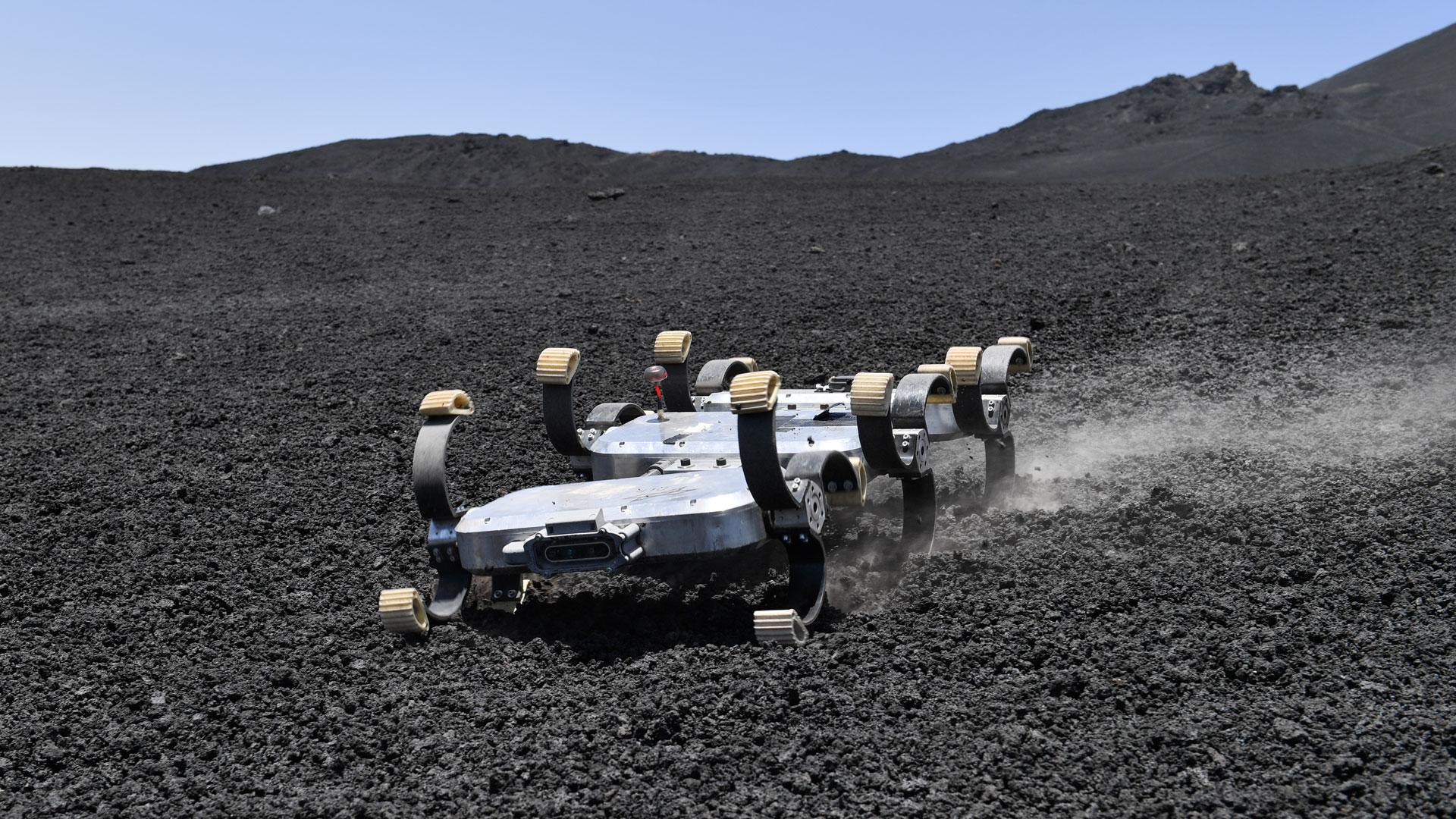
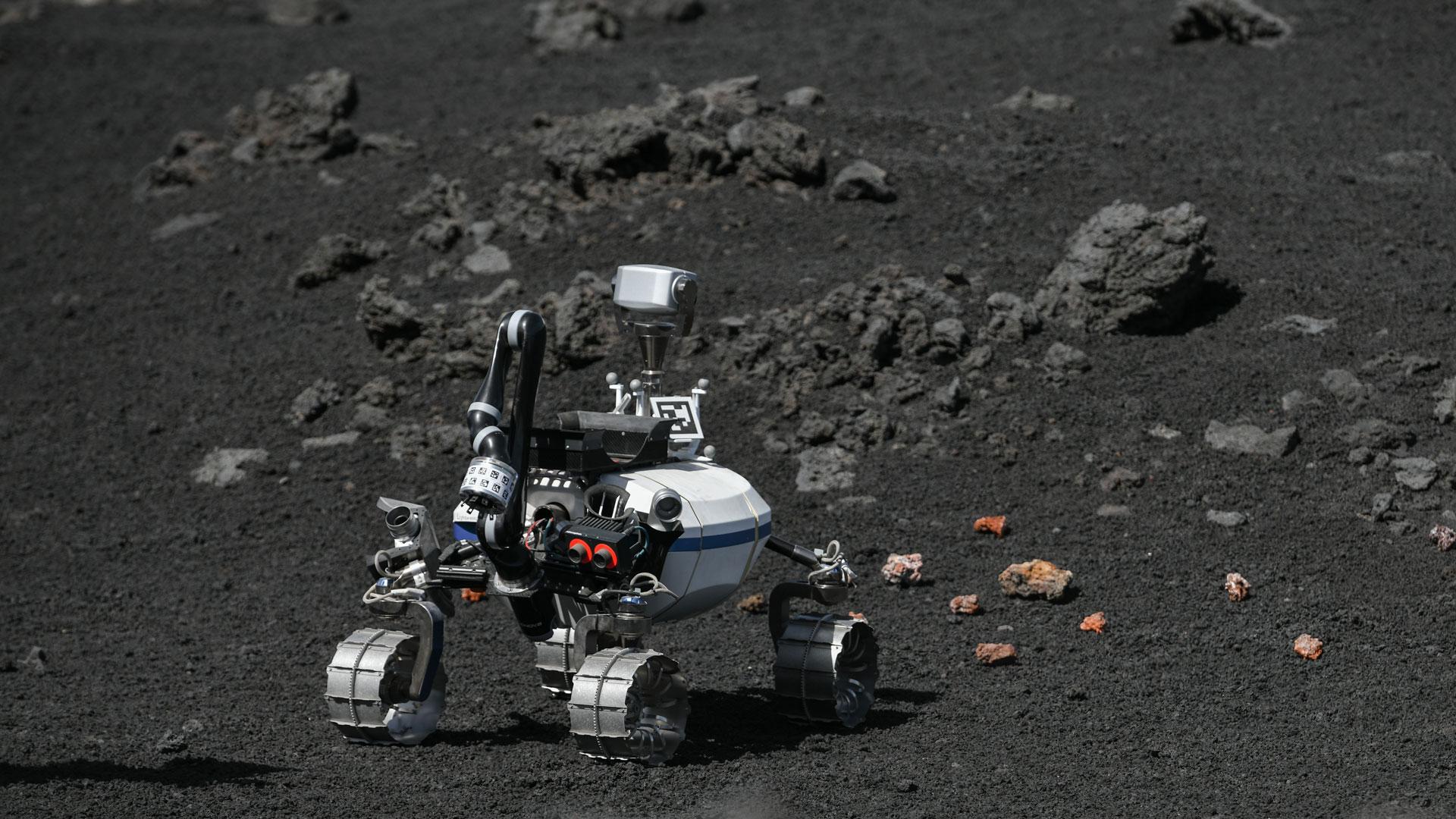

"Teams of mobile robots have an important role to play in future space missions," Armin Wedler, a project manager at the DLR Institute of Robotics and Mechatronics, said in a statement. "Operating in heterogeneous teams, the robots complement and support each other with their different capabilities."
The teams tested several scenarios of robot cooperation, including one in which the robots delivered rock samples to a simulated lunar lander and one when they were controlled from a simulated space station orbiting the moon. During the demonstration, retired German astronaut Thomas Reiter acted as an astronaut scientist from a control room about 14 miles (23 kilometers) from where the robots were deployed.
In yet another experiment, the robots were tasked to set up a simulated astronomical observatory on the slopes of Etna, pretending it was the far side of the moon. The robots distributed small low-frequency radio antennas in the moon-like terrain, which could be used to detect radio signals from distant galaxies.
Breaking space news, the latest updates on rocket launches, skywatching events and more!
"We have gained a lot of experience that will help us in the development of future missions," Thomas Krüger, from the European Space Agency's Human Robot Interaction Lab, which collaborated on the project, said in the statement.
Follow Tereza Pultarova @TerezaPultarova. Follow us on Twitter @Spacedotcom and on Facebook.

Tereza is a London-based science and technology journalist, aspiring fiction writer and amateur gymnast. She worked as a reporter at the Engineering and Technology magazine, freelanced for a range of publications including Live Science, Space.com, Professional Engineering, Via Satellite and Space News and served as a maternity cover science editor at the European Space Agency.
